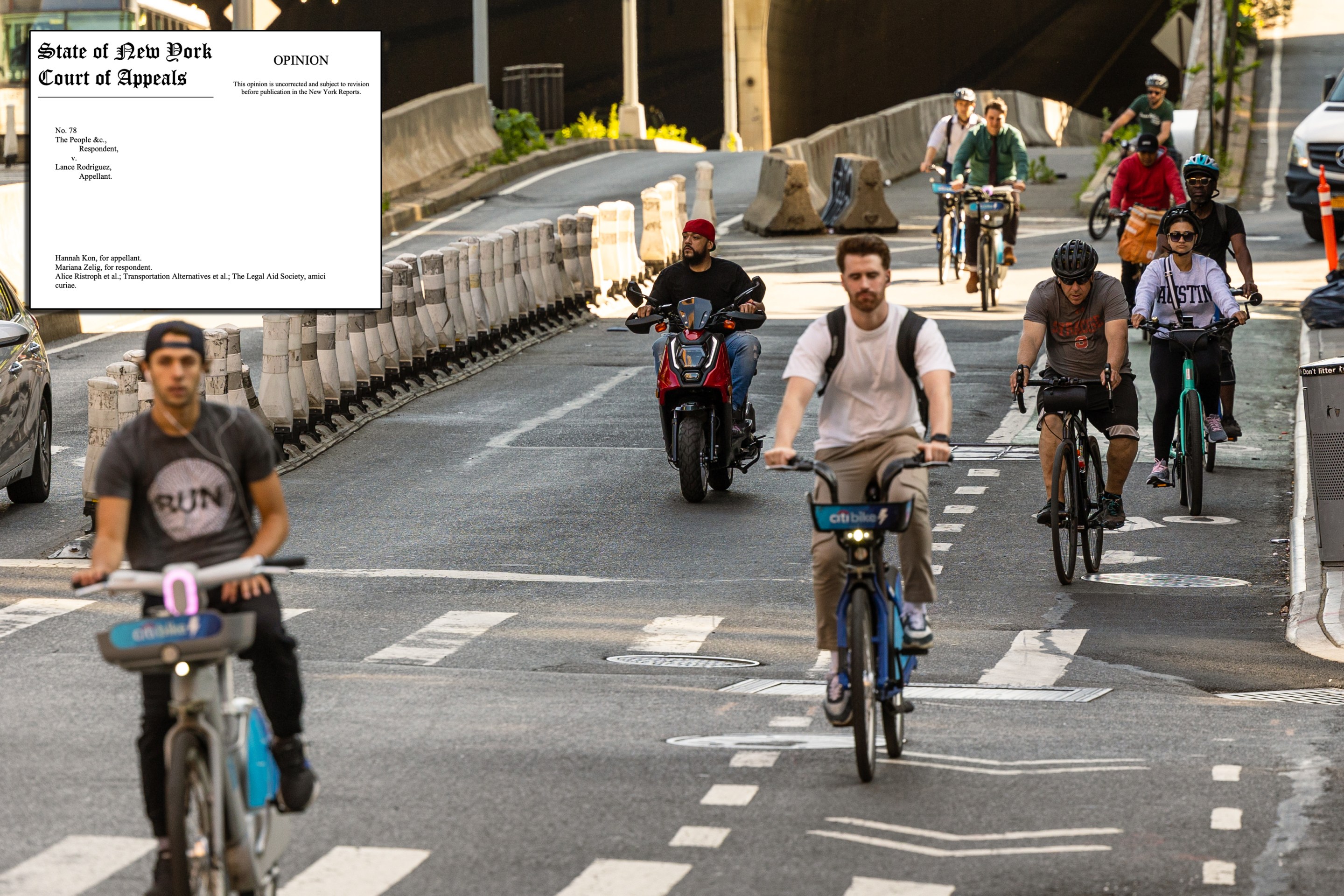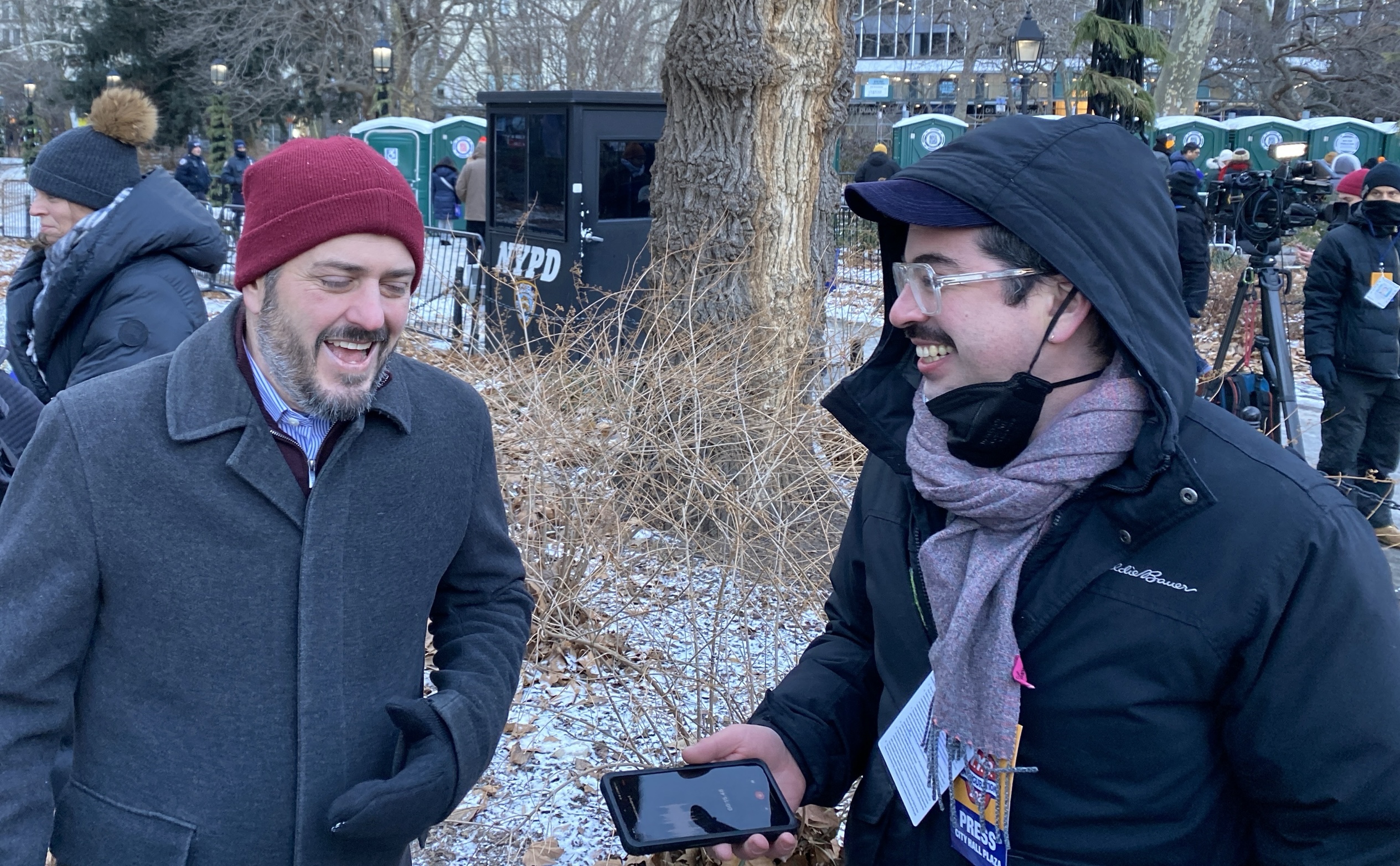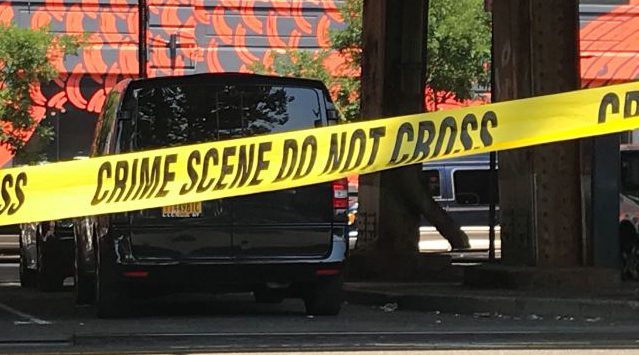They’re taking a victory lap.
The highest court in New York this week decided that bicyclists should have the same protection as car drivers against unlawful search and seizure — a decision that connects to the city’s long history of cops targeting people of color who get around by bike.
The case dates back to 2014, when Lance Rodriguez, who had been riding a beach cruiser bicycle in the Far Rockaway neighborhood of Queens, was arrested by cops who claim they spotted something “bulky” in his pants. The object indeed turned out to be a gun, which led to Rodriguez's eventual conviction. But last year, Rodriguez appealed with the help of the New York Civil Liberties Union, which argued in a brief that cops had violated his Fourth Amendment right against unreasonable search and seizure — and that the unconstitutional search would not have happened had he been in a car and not atop a bicycle.
In a 4-3 milestone decision written by Judge Jenny Rivera and backed by Chief Judge Rowan Wilson and Judges Shirley Troutman and John Egan Jr., the court agreed.
“What the court held is that the officer didn't have the basis to stop him and based on just seeing a bulge in his waistband,” said NYCLU senior attorney Daniel Lambright. “This is a very good decision [that] sends a message that bicycles deserve the same constitutional protections as people driving around in cars.”
The origins of the case date back to the landmark 1976 case, People v DeBour, which established the framework under which police can stop people on the street.
In plain English, there are four levels of a proper DeBour search:
- The first, the least intrusive, typically applies to pedestrians. Police officers only need what’s called “Objective Credible Reason” before they can demand a person’s identification and ask non-accusatory questions. In a first-level search, a person has the right to refuse to answer and can leave.
- A second level DeBour search requires that cops only have “founded suspicion” of criminal activity, such as direct observation or even hearsay. The type of questions cops can ask is limited, and the person is still free to go. Rodriguez, spotted with a bulge in his pants, was stopped using this level of search.
- Such a search can easily escalate to the third, which is considered a seizure and requires a higher standard of reasonable suspicion that the person committed a crime. The person is not free to leave and is subject to a “very intrusive” investigation, according to Lambright.
- The fourth level is an arrest, which requires probable cause.
The courts have long upheld that cops must apply the third level of DeBour to stopping people in motor vehicles — based on the logic that stopping a person in a car is such a “restriction of the liberty of an individual” that it should be considered a seizure. And until this week, that same theory did not apply to cyclists, said Lambright.
Had Rodriguez, who was 20 years old at the time, been driving a car on the night of Dec. 13, 2014, he likely would not have been stopped by Police Officer Richard Schell of the 101st Precinct.
“A good officer would really just need to follow Mr. Rodriguez around and if they saw him violate one of the many provisions of the (vehicle and traffic law),” said Lambright, after the court’s ruling. “A bulge in his waistband could be anything.”
The decision not only sets a new precedent for cyclists’ constitutional rights throughout the state, but it also vacated Rodriguez's conviction, clearing his record of the crime, according to his attorney Hannah Kon, a senior staff attorney at Appellate Advocates. Though Kon noted that her client still had to suffer for two years behind bars.
"That's the unfortunate reality...he isn't going to benefit as much as he should from this decision," said Kon. "More people are biking to work everyday, and bicyclists who decide to do that shouldn't be subject to more police interference just because they can't afford a car or made a choice to help the environment."
But the high court’s three dissenting justices — Judges Madeline Singas, Michael Garcia and Anthony Cannataro — bitterly attacked the majority ruling as soft on crime.
“The majority recoils from the ramifications of its holding, but the result speaks for itself. Now, instead of acting to rid our streets of the deadly menace presented by loaded firearms, the police will be forced to ignore a cyclist with a waistband bulge, for no reason other than that the person happened to be riding a bicycle,” they wrote in the Nov. 21 dissent.
But the real public safety concern comes from the police stops themselves that can turn violent, or even deadly, and from the fact the NYPD has a long record of targeting Black and brown people, including those on bikes, according to Lambright.
“The idea from the dissent that this opinion would undermine public safety is completely overblown and really kind of farfetched,” said Lambright.
Streetsblog has reported that police disproportionately write tickets to people of color for low-level offenses, such as biking on the sidewalk. According to the most recent stats, police wrote 421 summonses for biking on the sidewalk last year. Eighty-three percent of the tickets where the officer included the race of the suspect were issued to Black or Hispanics, who comprise roughly 50 percent of the population. Only 8 percent of the tickets were written to white people, who comprise roughly 40 percent of the population.
Those numbers followed the same pattern of harassment from years prior. In 2018 and 2019, of the 440 tickets issued to bikers for the low-level offense, 374 of those where race was listed — or 86.4 percent — went to Black and Hispanic New Yorkers. During the same 24 months, police issued white cyclists just 39 tickets for riding on the sidewalk — only 9 percent of the total number of tickets where race was indicated, according to Streetsblog’s reporting, which was cited in the original brief filed last October.
But how this decision will actually play out on city streets and whether the police will alter their discriminatory behavior remains a question mark, especially given Mayor Eric Adams' proclivity to throw cops at problems, said Lambright.
“Theoretically there should be less stops of bicyclists if they are just kind of complying … but there's always a gulf between what theoretically should happen and what actually happens, especially with the Adams administration’s commitment to using police to solve every single problem in the city,” he said.
Neither the NYPD nor City Hall responded to requests for comment.






